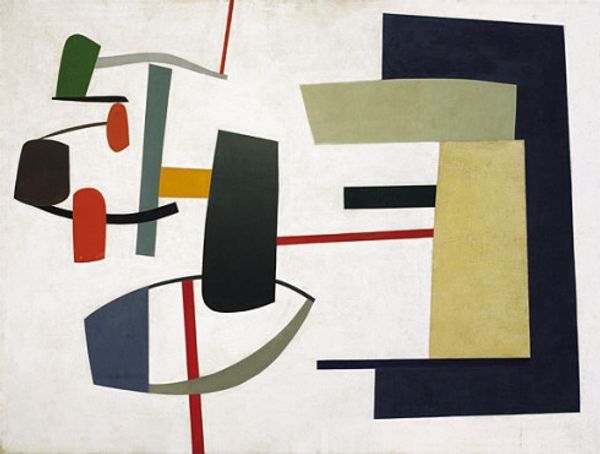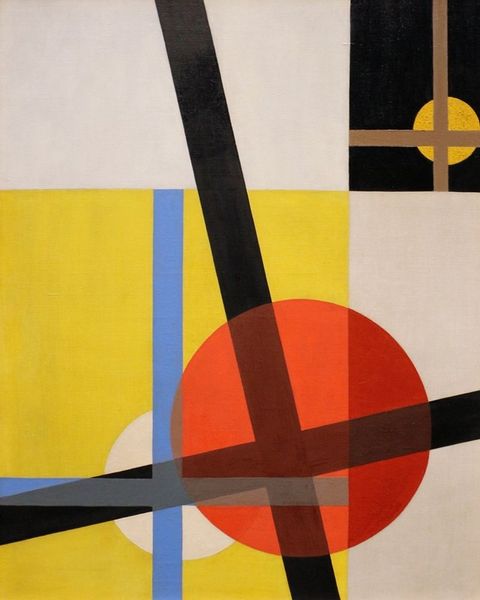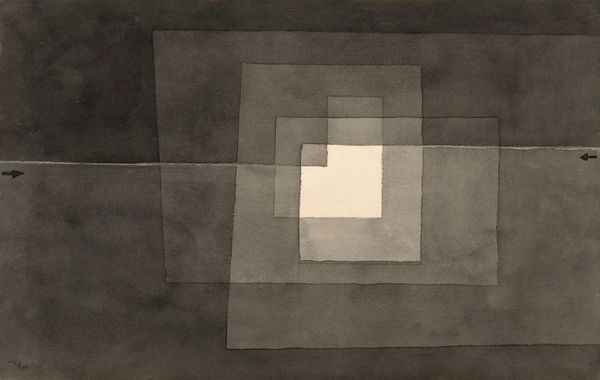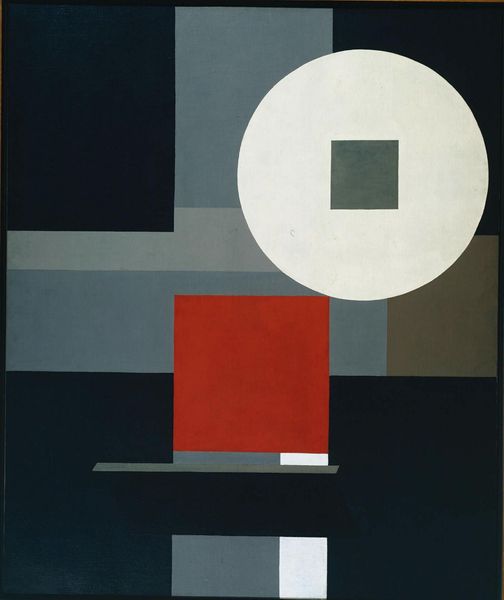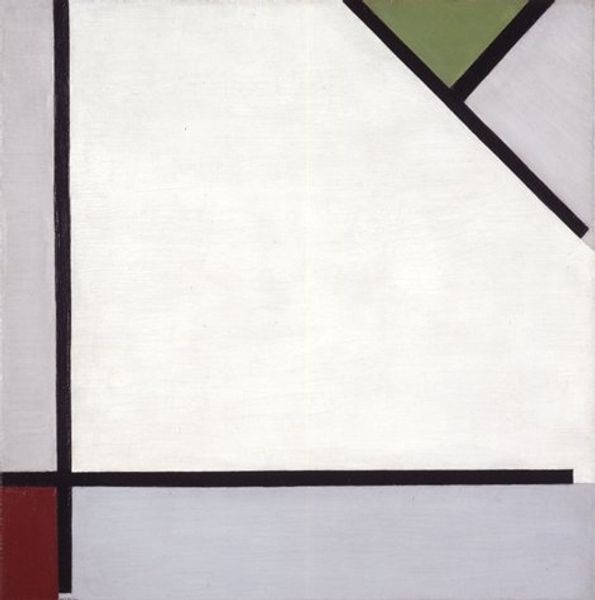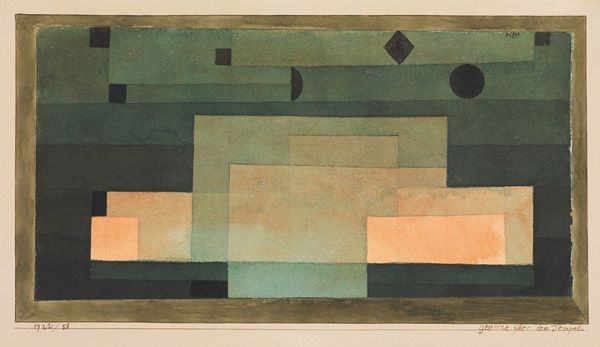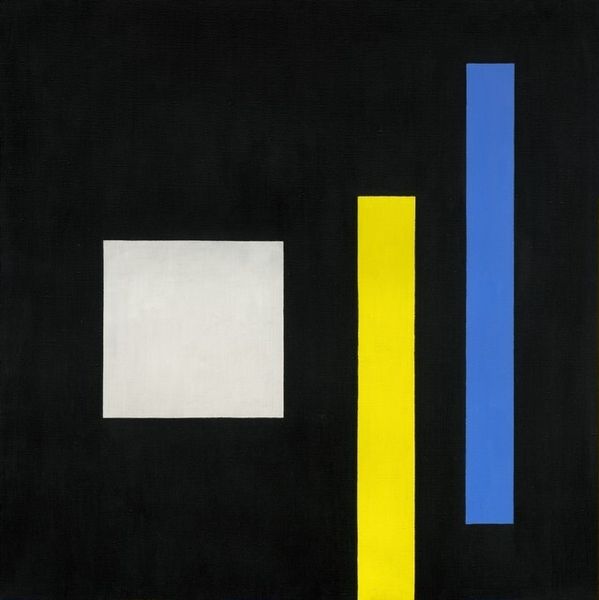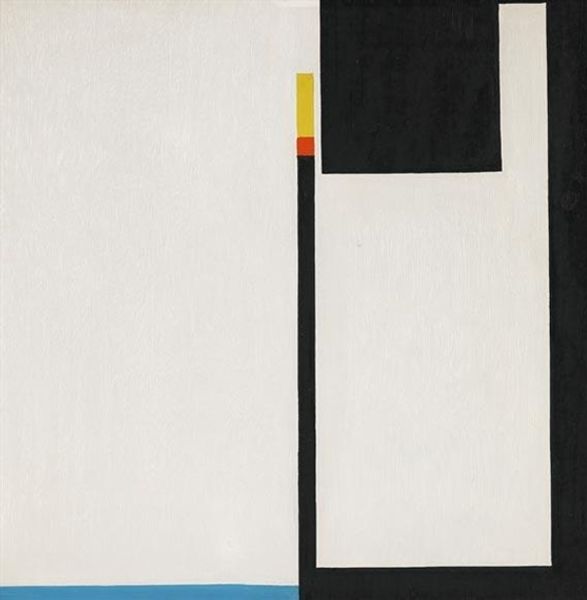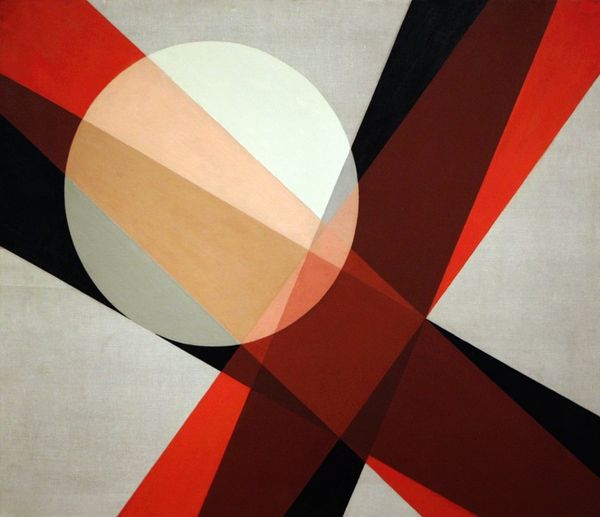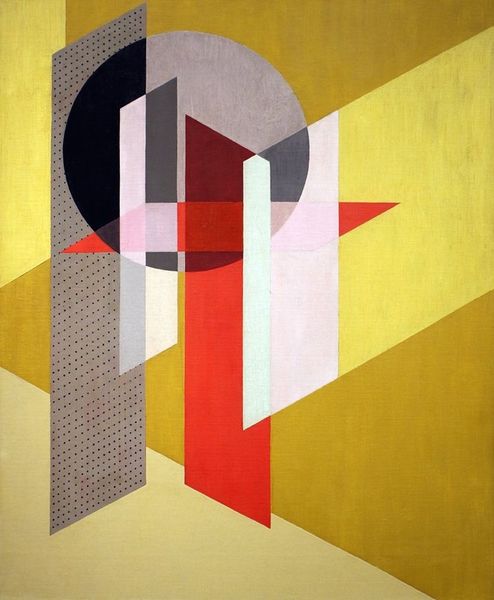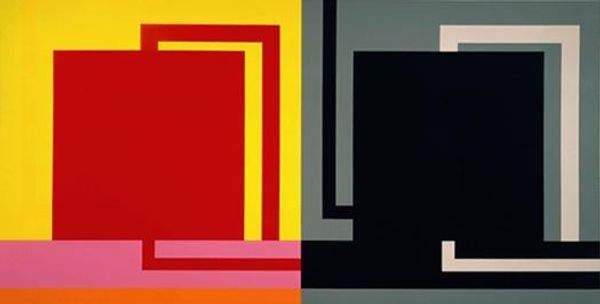
painting
#
painting
#
constructivism
#
abstract
#
form
#
geometric
#
abstraction
#
line
#
modernism
Copyright: Public Domain: Artvee
Curator: Laszlo Moholy-Nagy's "K VII," painted in 1922, pulls you into the artist’s evolving explorations of constructivism and abstraction. Editor: My first thought? It's strangely calming, like an architectural blueprint trying to achieve inner peace. There’s this interplay of boldness and subtlety that captivates. Curator: Absolutely. Moholy-Nagy was part of the Bauhaus movement, so he wasn’t just thinking about painting; he was also envisioning how art could shape design, technology, and even social progress. This piece exemplifies the movement's utopian visions. The careful arrangement of geometric forms evokes machine precision but also a sense of spiritual harmony. Editor: You know, I’ve always felt Bauhaus gets a bad rap for being cold, but you see so much playfulness and exploration here. What’s really striking is the stark red vertical line; it just cuts through all these soft grays and beige—a jolt to the eye, yet crucial to the whole composition. Curator: Right! It serves to disrupt our eye and add a dynamic tension. Moholy-Nagy saw light and color as tools. These forms aren't just floating on the canvas; they're interacting, pushing and pulling, defining space. It’s about activating the viewer, making us question how we perceive depth and dimension. Editor: He definitely does that! It’s a painting that asks questions, not just about art but about the possibilities of a new, rationally designed world. A world which perhaps did not come into being, in fact, or which took another, somewhat less inspiring route. And yet... it holds potential and hope in the power of simple shapes, beautifully balanced. It’s surprisingly human, despite the lack of recognizable figures. Curator: Indeed. Looking back, Moholy-Nagy's “K VII” isn't just a painting; it's a manifesto of possibility, a reminder of art's capacity to reshape our world, if only in our minds. Editor: Exactly. And on that note, I think I see new potential in the possibilities of lunch. Shall we?
Comments
No comments
Be the first to comment and join the conversation on the ultimate creative platform.


